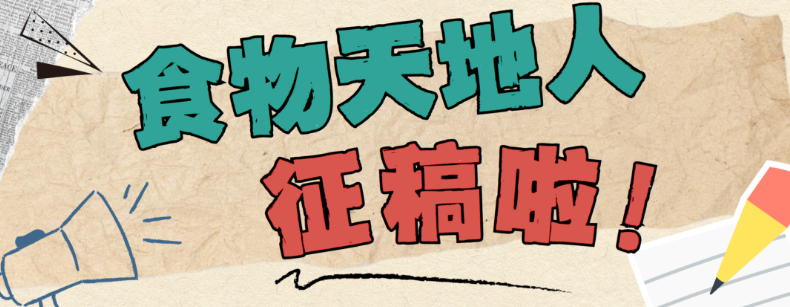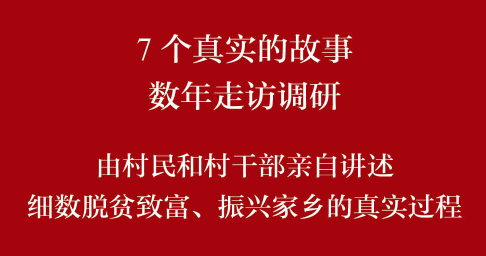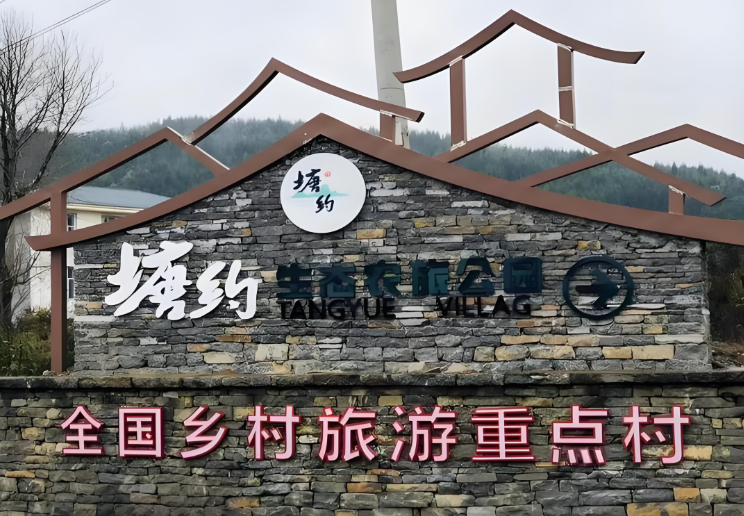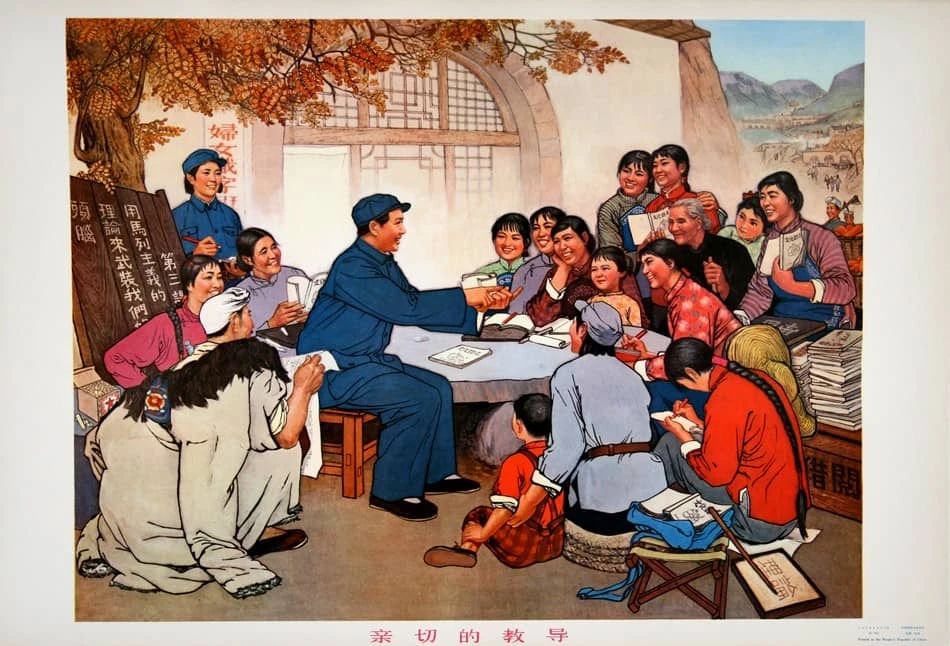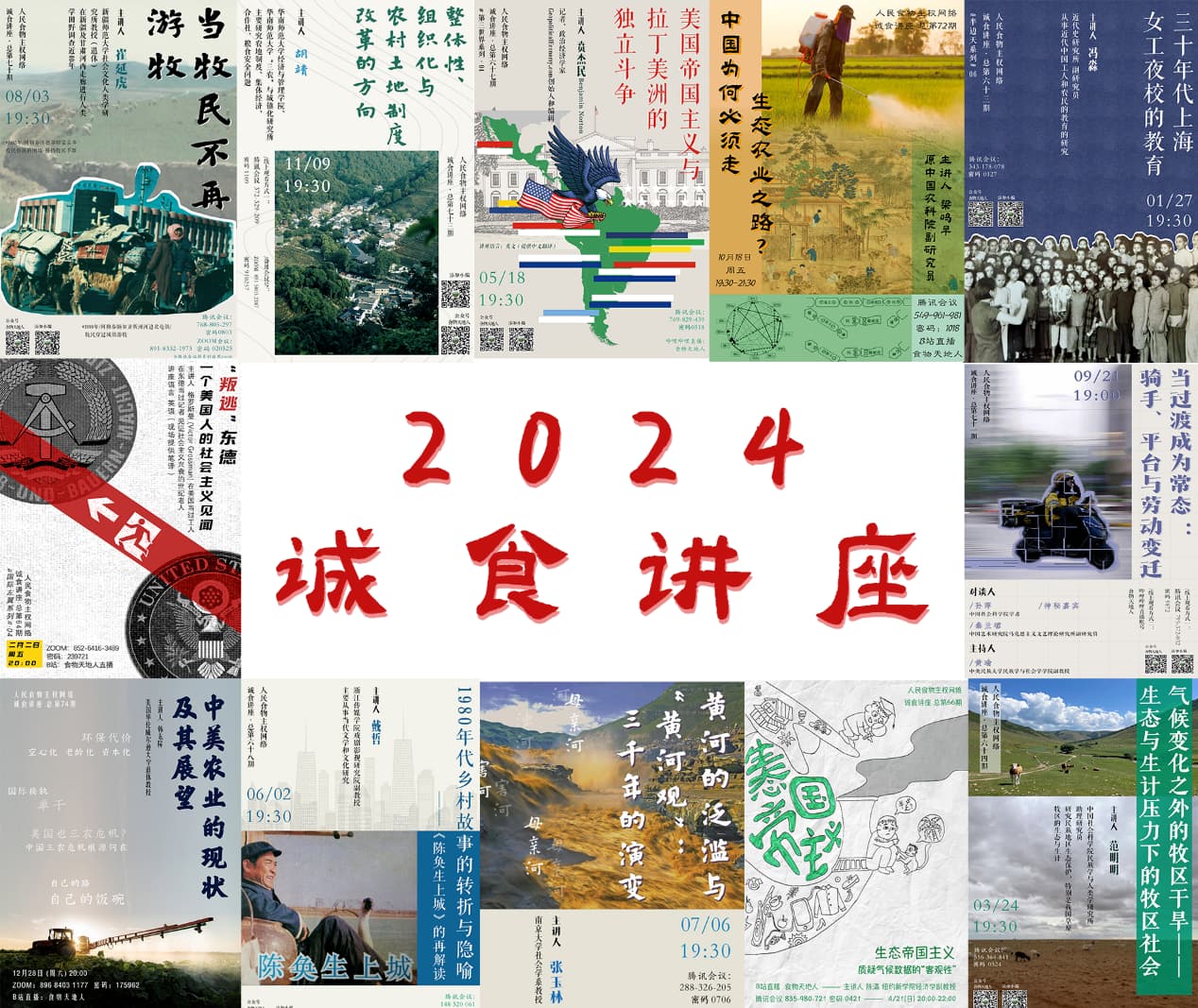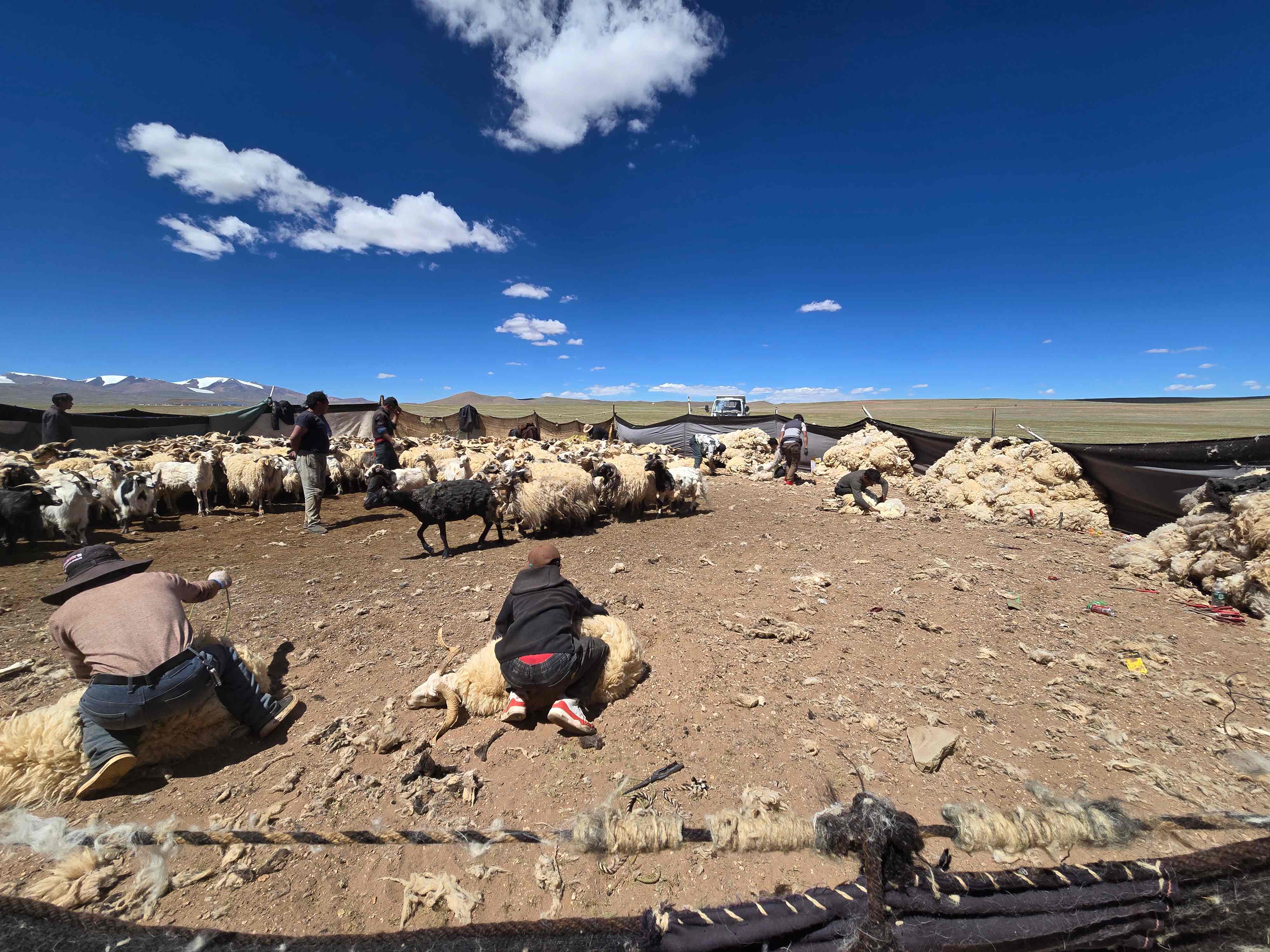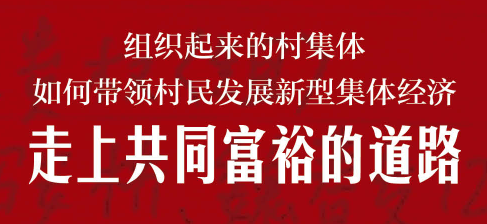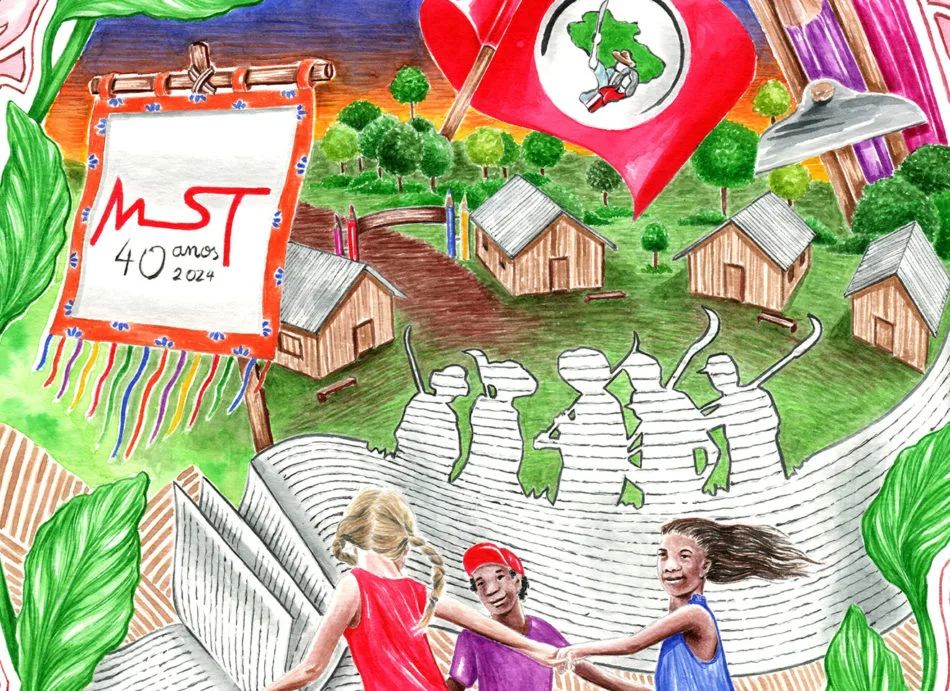直通失败:新基改作物能够减少农药使用量吗?当然不能!
来源: 地球之友(欧洲)简报,2022年5月 发布时间:2023-11-30 阅读:1267 次
导 语
推广基改作物(转基因和基因编辑)的话语往往从粮食安全和生态环保两个角度,将提高粮食产量和减少农药使用量作为种植基改作物最重要的两个理由。“地球之友”(欧洲)的简报以实际生产数据和作物育种原理揭穿了基改作物能够减少农药使用量的谎言,从生物技术公司盈利动机的角度指出了基改作物与农药之间捆绑销售的利益关系。因此,无论是在我国推进转基因作物商业化,还是欧盟委员会修订转基因生物法规,将新基改作物排除在目前的安全检查和标签要求之外,都是不可行的。
注:在支持根据现有转基因法律对基因编辑生物进行监管的前提下,本文的基改作物包括传统转基因作物(主要为抗虫和耐除草剂作物)和新基因编辑作物。下文将转基因作物称为第一代基改作物,将基因编辑作物称为新一代基改作物。
作者 | 克莱尔·罗宾逊Claire Robinson
编辑| Gaelle Cau, Mute Schimpf, Annelies Schorpion
翻译&校对|侯娣 泓西 小展
责编|侯娣 杨文
后台编辑|童话
一、总 结
到2030年将农药使用量减少50%是欧盟“农场到餐桌(Farm to Fork)和生物多样性战略”的中心目标,它旨在提高粮食和耕作系统的可持续性,扭转环境退化趋势1。
欧盟委员会的卫生部门(DG SANTE)声称,使用新的基因改造技术(也称为新基因组技术)生产的作物可以帮助实现这一目标2。欧盟委员会认为欧盟的转基因生物法规“不符合目标”,因此对其进行了修订,以加快推广新一代基改作物3。这次修订可能会将这些基改作物排除在目前的安全检查和标签要求之外。
这份简报将介绍第一代基改作物(即目前正在种植的转基因作物)的历史,以及商业化的和正在研发中的新基改作物。这些研究结果表明,新基改作物不仅不会减少农药的使用,甚至有些作物的设计还有意增加了农药使用量。
二、欧洲关于减少农药使用量的争论升温
早在2009年,欧盟政府就被要求减少农药的使用,但《农药可持续使用指令》(the Sustainable Use of Pesticides Directive)4的实施普遍失败,因而将被修订5。2022年3月,欧盟委员会甚至推迟了其关于约束性减排目标的提案。(与之相比)社会、政治和科学界广泛认同,停止使用合成农药势在必行。
科学家警告说,化学污染已经超过了人类的安全限度,威胁着全球生态系统的稳定6。许多公民社会组织都要求新立法“停止鼓励精细农业和基因工程技术,(因为)这只会维持工业化农业模式和对农药的结构性依赖”7。
作物育种:过度简化的解决方案不会持久
作物育种者希望获得广谱和持久的抗虫和抗病能力,使害虫和病原体难以轻易适应。这些是复杂的遗传特征,涉及到许多基因在网络中起作用,是不能通过基因修饰操纵一个或几个基因实现的。害虫和病原体的进化速度很快,因而能够避开目标范围狭窄的育种方法,这就是为什么通过基因工程将抗虫和抗病性导入作物的尝试都失败了,或者效果很短暂8。
三、第一代基改作物增加了农药使用量
第一代基改作物是在20多年开始种植的,它和现在的新基改作物都承诺减少农药使用量9。然而,数据显示,在广泛种植转基因作物的国家,第一代基改作物增加了农药使用量。绝大多数的转基因作物具有如下特点:
(1)耐受除草剂,这意味着它们经过改造,能够在喷洒农药时存活,而其他植物和杂草则受到伤害;(2)抗虫性,这意味着它们经过修饰,可以产生一种毒素,减轻作物害虫对它们的伤害。
在这两种情况下,无论是杂草还是作物害虫在转基因作物生态系统中都进化出了耐受性或抗药性。
其他关于作物适应干旱或改变作物构成的承诺实际上并未奏效,即便实现了,使用的也是传统的作物育种技术。
1、耐除草剂转基因作物导致农药使用量激增
美国:由于种植耐除草剂转基因作物(主要是草甘膦除草剂,如农达),在1996年至2011年间,除草剂的使用量估计增加了2.39亿公斤10。随着耐草甘膦转基因作物的广泛种植,自1974年以来的近67%的农业草甘膦除草剂的使用量集中在在2005年至2014年之间11。
巴西:耐除草剂转基因大豆于2003年获得批准。2000年至2012年间,除草剂的总使用量增加了1.6倍,大豆除草剂的使用量增加了3倍,这促使科学家们指出:“巴西种植转基因作物导致除草剂使用量增加,可能会增加环境和人类接触除草剂的机会,并带来相关的负面影响。”12
阿根廷:1996年批准种植抗除草剂转基因大豆。每个生产年度(crop year)每公顷草甘膦的使用量估计从2000年的2.83千克增至2014年的4.45千克,即增加了60%13。在转基因大豆上喷洒草甘膦会增加人们患癌症和发生出生缺陷的几率14。
2、超级杂草和增施农药的死循环
随着耐草甘膦转基因作物在一些国家的广泛种植和草甘膦的使用量增加,杂草对这种除草剂进化出了抗药性。农民最初喷洒更多的草甘膦,但没能控制耐药性杂草。耐草甘膦的“超级杂草”是转基因作物除草剂使用量增加的主要原因15。
作为应对措施,生物技术公司研发了耐多种除草剂的作物,这些作物在喷洒麦草畏、2,4-D和草铵膦等除草剂后仍能存活。但杂草对这些除草剂也产生了耐药性16,遍布了美国农场17。由于除草剂麦草畏会脱离目标作物飘到周围的农场,毁坏了农场的作物,农民因此对其提起了诉讼18。
把农民和除草剂绑在一起只会让大型基改生物研发公司获益,因为拜耳(Bayer)(孟山都的所有者)、科迪华(Corteva)(前陶氏杜邦DowDuPont)、先正达(Syngenta)和巴斯夫(BASF)这些公司也主导着全球除草剂市场。
超级毒素
生物技术公司声称,引入基改作物中的Bt毒蛋白是一种只对少数昆虫有毒的天然蛋白,与有机农夫为控制虫害而喷洒的天然Bt毒素相同27,人畜可安全食用28。孟山都设计的基改作物成为了 "超级毒素"——这意味着它们对昆虫的毒性更大,影响更多的物种。29研究证实,Bt抗虫作物和含有Bt的作物对大多数昆虫都有毒性30,能够引起哺乳动物中毒。31
3、Bt抗虫作物在短短几年内失效
Bt抗虫作物经过基因工程改造,含有一种叫做Bt毒蛋白的杀虫剂。这种毒蛋白内置于植物中,因此吃了植物任何部分的昆虫都会受到伤害。基于选择性的研究,转基因生物的倡导者声称他们减少了化学杀虫剂的使用。19然而,如果从长期和全面的角度来看,这种说法本身就是错误的。
在美国,Bt抗虫作物最初使喷洒的杀虫剂略有减少,但这是暂时的,因为目标害虫很快对转基因Bt毒蛋白产生了抗性,美国、中国、印度和巴西的Bt抗虫作物中,Bt毒蛋白的非目标害虫也增加了。20在印度,害虫的抗药性促使棉农今天在杀虫剂上的花费比引进Bt抗虫棉之前还要多。21农民为Bt抗虫棉种子付出高昂代价,而生物技术公司则从他们失败的虚假承诺中获利。
声称Bt抗虫作物减少了杀虫剂的使用22,具有误导性,原因如下:
(1)这些数据大多来自Bt抗虫作物早期推广时期,在害虫产生抗药性而迫使农民重新喷洒化学杀虫剂之前。有些人从未停止使用杀虫剂。23
(2)转基因Bt毒蛋白本身就是一种杀虫剂,Bt抗虫作物产生的毒素量远远超过它要取代的杀虫剂的量。24
2020年,美国环境保护署(EPA)(该署并不以批评转基因农业系统而闻名)因为担忧昆虫抗药性,提议在未来几年内逐步淘汰许多Bt抗虫玉米和一些Bt抗虫棉。25因此,一项长期分析认为,第一代基改作物并没有降低农药使用量,削弱植物害虫抗性,反而具有促进作用。
4、基改作物使用的农药毒性增加
美国的一项研究发现,与非基改作物相同,用于基改作物的农药,其毒性随着时间的推移在增加。施用于Bt玉米的每公顷杀虫剂的毒性与常规玉米的相同。耐受除草剂的基改作物导致草甘膦的使用量大幅增加,导致基改大豆的毒性稳步上升26。
四、新基改作物不能减少农药的使用
生物技术巨头和转基因生物的倡导者声称,新的基改作物与第一代不同,它们将减少农药的使用。但是,证据再一次表明,情况并非如此。
1、新的耐除草剂的基改作物:旨在增加农药的使用
目前在商业化进程中的许多新的基改作物,被设计为增加除草剂的使用。欧洲联合研究中心(JRC)根据转基因生物开发者提供的信息进行的审查发现,在接近商业化的新基改作物中,最大的性状组(16种作物中的6种)是耐除草剂的。32第一个向欧盟申请批准的CRISPR编辑33作物是一种耐草铵膦除草剂并产生杀虫毒素(不是Bt)的玉米。34一种商业化的耐除草剂的油菜籽35也增加了除草剂的使用。
这并不奇怪,因为许多生物技术公司的商业模式36是以耐受除草剂的作物和与之配套的农药为目标。
2、新的不耐受除草剂的基改作物:与农药使用无关
一些商业化的新基改作物不耐受除草剂,但也不会减少农药的使用。这其中包括Calyxt公司改变脂肪结构的大豆,37含有大量镇静物质的西红柿,38以及长得更大的鱼等基改产品39。
Calyxt公司,总部位于美国新墨西哥州罗斯维尔市,是一家植物合成生物学公司,从美国明尼苏达大学拆分成立。2018 年,该大学的研究人员“关闭”了大豆中产生反式脂肪的基因——这是美国农业部认可的第一批基因编辑作物之一。
基于关于商业化进程中的新基改作物的公开资料综述40显示,作物成分包括脂肪酸、淀粉和蛋白质等的变化,它们是用于工业和快餐食物,而不是为了环境友好型农耕系统。41个别作物还包括耐储存土豆和无籽黑莓。42这些是常用的新基改工具CRISPR在植物育种中的一些例子。
一些新基改作物意图通过基因改造来抵抗害虫或疾病,理论上可以减少农药的使用。Cibus公司计划将基因编辑作物用于抗病、抗线虫和耐除草剂43。
然而,不知道其中有多少会真正进入市场,因为已宣布的产品经常没有任何解释地从开发渠道中消失。到目前为止,这项研究还远未达到任何商业用途,而如生态农业一样的真正的解决方案,已经被证实可以与大自然相互协同,并大量减少农药用量。
五、已经验证(可行)的解决方案
追求错误的转基因“解决方案”来减少农药使用会阻碍人们探寻真正有效的方法。这些真正有效的方法是基于系统的(例如生态农业和有机农业中的方法),而不是专注于遗传工程方法。
在基因很重要的前提下,基于全基因组抗虫和抗病的传统育种仍然比基因改造更有效44。例如,对抗携带破坏性病毒的害虫时,传统育种的抗性玉米与新烟碱类杀虫剂一样有效45。
基于系统的解决方案包括:
用有机物改造土壤。这种做法的好处包括以植物可以使用的形式提供营养、刺激有益土壤生物的生长、减少土壤侵蚀和农药/化肥径流、保持水分、抵御洪水、降低盐度,从而提高作物对病虫害的抵御能力46。
自然生物控制,如种植花带以吸引传粉昆虫和控制害虫的有益昆虫47。这项技术与安装信息素带驱除蚜虫相结合,可以将谷物和十字花科作物中的蚜虫数量控制在造成经济损失的水平以下48。生物控制是害虫综合治理系统(IPM)的组成部分49。
防止害虫的物理屏障方法,可以(例如)防止害虫在土壤中产卵50。
谷物轮作,可以防止害虫和杂草的滋生,并保持土壤健康51。轮作是使用新烟碱类杀虫剂的有效替代方案,可以将害虫种群控制在经济损失阈值以下52。
用机械工具除草,最近还有除草机器人,有可能100%取代除草剂的使用53。
杂草的屏障方法,包括覆盖54。
间作(在同一块地里同时种植不同的作物)和覆盖种植(种植作物主要用于覆盖土壤),这可以通过减少裸露土壤的面积来抑制杂草55。间作还可以减少土壤侵蚀56。
杂草综合管理,可以在不损害生产力的情况下减少除草剂的使用57。
六、系统性变革
减少农药使用的有效方法是进行系统性变革,只有这样才能为杂草和害虫问题提供持久的解决方案。对北美有机和传统粮食种植制度进行的最长时间的比较发现,经过5年的过渡期,有机制度的产量与传统制度相比一样具有竞争力。在没有化学杀虫剂的情况下,干旱时期的产量也会高出40%58。在法国农场进行的研究表明,77%的农场减少农药使用与提高生产力和盈利能力是一致的59。
决策者必须采取措施,避免农业滑向由少数公司控制的、依赖化石燃料的单一种植生产中。我们应加大对生态农业的公共投资(这将为农民带来更高的收入60)、应对气候变化的复原力61、保护生物多样性62,以及改善粮食安全和营养等好处63。
为实现减少农药的目标,决策者应采取以下行动:
认识到生物技术行业的目标并没有实现,它们只是没有证据的研究和营销想法。与此同时,农业生态学等真正的解决方案已经得到验证,但缺乏政策制定者的支持。
支持减少农药的真正解决方案,并促进公共政策的改革。科研、农业和环境领域的立法应围绕减少农药这个目标。
根据现有转基因法律对新基改生物进行监管,以确保消费者、种养殖从业者的选择自由,并对新技术产品进行严格的上市前安全检查和标签。
机构简介
地球之友(欧洲)是欧洲最大的草根环境网络,是国际地球之友在欧洲的分支,我们联合了74个国家成员组织、大约5000个当地活动组织和世界各地的200多万支持者。我们就当今最紧迫的环境和社会问题展开运动,挑战当前的经济和企业全球化模式,并促进将有助于创建环境可持续和社会公正社会的解决方案。我们寻求增加公众的参与和民主决策。我们努力实现环境、社会、经济和政治正义,并在地方、国家、区域和国际各级平等获得资源和机会。
参考文献:
1 European Commission (2020). Farm to Fork Strategy: For a fair, healthy and environmentally-friendly food system. https://ec.europa.eu/food/system/files/2020-05/f2f_action-plan_2020_strategy-info_en.pdf ; European Union (2021). EU biodiversity strategy for 2030. https://op.europa.eu/en/publication-detail/-/publication/31e4609f-b91e-11eb-8aca-01aa75ed71a1
2European Commission (2021). Study on the status of new genomic techniques under Union law and in light of the Court of Justice ruling in Case C-528/16. pp. 6, 59. https://ec.europa.eu/food/plants/genetically-modified-organisms/new-techniques-biotechnology/ec-study-new-genomic-techniques_en
3EU Commission (2021). Biotechnologies: Commission seeks open debate on New Genomic Techniques as study shows potential for sustainable agriculture and need for new policy. 29 Apr. https://ec.europa.eu/commission/presscorner/detail/en/ip_21_1985 ; Blenkinsop P (2021). EU calls for rethink of GMO rules for gene-edited crops. 29 Apr. https://www.reuters.com/world/europe/eu-calls-rethink-gmo-rules-gene-edited-crops-2021-04-29/
4Directive 2009/128/EC of the European Parliament and of the Council of 21 October 2009 establishing a framework for Community action to achieve the sustainable use of pesticides. https://eur-lex.europa.eu/legal-content/EN/ALL/?uri=celex%3A32009L0128
5European Commission (2020). Report from the Commission to the European Parliament and the Council on the experience gained by Member States on the implementation of national targets established in their National Action Plans and on progress in the implementation of Directive 2009/128/EC on the sustainable use of pesticides. 20 May. https://ec.europa.eu/food/system/files/2020-05/pesticides_sud_report-act_2020_en.pdf
6Persson et al. (2022), Outside the Safe Operating Space of the Planetary Boundary for Novel Entities, Environ. Sci. Technol: 10.1021/acs.est.1c04158
7https://friendsoftheearth.eu/wp-content/uploads/2022/02/SUD-Joint-Statement.pdf
8Mehta D et al (2019). Genome Biology 20, article no. 80. https://genomebiology.biomedcentral.com/articles/10.1186/s13059-019-1678-3 ; GMWatch (undated). GM cassava “our only hope”. https://www.gmwatch.org/en/gm-cassava-our-only-hope ; Zhao H et al (2016). Virology 106(8). 27 May. https://apsjournals.apsnet.org/doi/10.1094/PHYTO-05-15-0111-R ; Gathura G (2004). GM technology fails local potatoes. The Daily Nation. 29 Jan. http://www.lobbywatch.org/archive2.asp?arcid=2481; Bruce TJA et al (2015). The first crop plant genetically engineered to release an insect pheromone for defence. Sci Rep 5, article no 11183. https://www.nature.com/articles/srep11183
9Monsanto (2004). Products and solutions. Archived version of 3 Feb 2004 https://web.archive.org/web/20040203103056/http://www.monsanto.com/monsanto/layout/products/default.asp. Example quote: “Our current biotechnology products include herbicide-tolerant and insect-protected crops… These biotech crops provide solutions for pest and weed control that can have added benefits for growers, consumers and the environment including a reduction in the number of pesticide sprays and reduced environmental exposure... and compatibility with more sustainable agricultural practices... We’ve made considerable progress in demonstrating the benefits of agricultural biotechnology — including reduced pesticide use…”
10Benbrook C (2012). Env Sci Eur 24, article no 24. https://enveurope.springeropen.com/articles/10.1186/2190-4715-24-24
11Benbrook C (2016). Env Sci Eur 28(1):3. http://www.enveurope.com/content/28/1/3/abstract
12Almeida VES de et al (2017). Ciência & Saúde Coletiva 22:3333-3339. http://www.scielo.br/j/csc/a/tjr9r6KFWxPMqzxM3jKDBPJ/?lang=en
13Benbrook C (2016). Env Sci Eur 28(1):3. Supplemental Table S22. http://www.enveurope.com/content/28/1/3/abstract. Glyphosate rate per crop year cited in this paper is from Benbrook CM (2005). Rust, resistance, run down soils, and rising costs – Problems facing soybean producers in Argentina. AgBioTech InfoNet. Appendix 4. http://web.archive.org/web/20110103061717/https://www.biosafety-info.net/file_dir/2916248854c16c65ea.pdf. These figures are extrapolated in turn from data on herbicide sales per year in Argentina collected by pesticide industry association CASAFE. See: CASAFE (archived version of 2007). Estadística. https://web.archive.org/web/20070925135443/http://www.casafe.org.ar/mediciondemercado.html
14Vazquez MA et al (2017). International Journal of Clinical Medicine 8(20):73. http://www.scirp.org/journal/PaperInformation.aspx?PaperID=74222&#abstract ; Campana H et al (2010). Arch Argent Pediatr 108:409–417. http://www.ncbi.nlm.nih.gov/pubmed/21132229 ; Avila-Vazquez M et al (2018). J Envi Protection 9(3):241. http://www.scirp.org/journal/PaperInformation.aspx?PaperID=83267&#abstract
15Benbrook C (2012). https://enveurope.springeropen.com/articles/10.1186/2190-4715-24-24
16LeClere S et al (2018). Proceedings of the National Academy of Sciences of the United States of America 115(13). https://www.pnas.org/doi/10.1073/pnas.1712372115 ; Martin H (2013). Herbicide resistant weeds. Ontario Ministry of Agriculture, Food and Rural Affairs. http://www.omafra.gov.on.ca/english/crops/facts/01-023.htm ; Unglesbee E (2021). Glufosinate-resistant pigweed. DTN Progressive Farmer. 17 Feb. https://www.dtnpf.com/agriculture/web/ag/crops/article/2021/02/17/glufosinate-resistant-palmer ; Brown HC (2021). Attack of the superweeds. New York Times. 18 Aug. https://www.nytimes.com/2021/08/18/magazine/superweeds-monsanto.html
17Brown HC (2021). https://www.nytimes.com/2021/08/18/magazine/superweeds-monsanto.html
18Consumernotice.org (2021). Dicamba lawsuits. https://www.consumernotice.org/legal/dicamba-lawsuits/
19Klümper W, Qaim M (2014). PLoS ONE 9(11). http://dx.doi.org/10.1371/journal.pone.0111629
20Tabashnik BE, Carriere Y (2017). Nat Biotechnol 35:926–935 ; Yang F et al (2019). Toxins (Basel) 11(2):102. https://www.ncbi.nlm.nih.gov/pmc/articles/PMC6416581/ ; Yang F et al (2019). Crop Prot 126:104915. https://www.sciencedirect.com/science/article/abs/pii/S0261219419302613 ; Tabashnik BE et al (2008). Nat Biotechnol 26:199–202. http://www.ncbi.nlm.nih.gov/pubmed/18259177 ; Gassmann AJ et al (2011). PLoS ONE 6: e22629. http://www.plosone.org/article/info:doi%2F10.1371%2Fjournal.pone.0022629 ; Farias JR et al (2014). Crop Prot 64:150-158. http://www.sciencedirect.com/science/article/pii/S026121941400204X ; Kranthi KR, Stone GD (2020). Nat Plants 6:188–196. https://www.nature.com/articles/s41477-020-0615-5 ; Zhao JH et al (2010). Environ Monit Assess 173:985-994. https://pubmed.ncbi.nlm.nih.gov/20437270/
21Kranthi KR, Stone GD (2020). Nat Plants 6:188–196. https://www.nature.com/articles/s41477-020-0615-5
22Klümper W, Qaim M (2014). PLoS ONE 9(11). http://dx.doi.org/10.1371/journal.pone.0111629
23Tabashnik BE et al (2008). Nat Biotechnol 26:199–202. http://www.ncbi.nlm.nih.gov/pubmed/18259177
24This is due to the trend toward GM stacked trait varieties of corn and cotton that express 2–6 different Bt toxins. According to one analysis, Monsanto-Dow’s SmartStax corn expresses over 3.5 pounds of Bt toxins/acre, while displacing 0.2-0.5 pounds of sprayed insecticide. See: Hygeia Analytics (2016). Impacts of GE on pesticide use. https://hygeia-analytics.com/pesticides/impacts-of-ge/
25US EPA (2020). Proposal to improve Lepidopteran resistance management for Bt plant-incorporated protectants. https://www.regulations.gov/docket/EPA-HQ-OPP-2019-0682 ; Unglesbee E (2020). Bt on the chopping block. DTN Progressive Farmer. 29 Sept. https://www.dtnpf.com/agriculture/web/ag/crops/article/2020/09/29/epa-proposes-phasing-dozens-bt-corn
26Hüdig M et al (2022). Genome editing in crop plant research—Alignment of expectations and current developments. Plants 11(2). https://www.mdpi.com/2223-7747/11/2/212/htm
27Orterfield A (2022). Myth busting on pesticides: Despite demonization, organic farmers widely use them. Genetic Literacy Project. 4 Feb. https://geneticliteracyproject.org/2022/02/04/myth-busting-on-pesticides-despite-demonization-organic-farmers-widely-use-them/
28Hammond BG, Koch MS (2012). A review of the food safety of Bt crops. https://link.springer.com/chapter/10.1007/978-94-007-3021-2_16. In: Sansinenea E (ed.) Bacillus thuringiensis Biotechnology. Springer, pp 305–325.
29Latham J (2017). Have Monsanto and the biotech industry turned natural Bt pesticides into GMO “super toxins”? Independent Science News. 9 Oct. https://www.independentsciencenews.org/environment/have-monsanto-and-the-biotech-industry-turned-natural-bt-pesticides-into-gmo-super-toxins/ ; Latham JR et al (2017). Biotechnol and Genetic Eng Reviews, 33:1, 62-96, DOI: 10.1080/02648725.2017.1357295. https://2k4vbx44lajeo2rag2seu29o-wpengine.netdna-ssl.com/wp-content/uploads/2017/09/Latham-et-al.-2017-The-distinct-properties-of-natural-and-GM-cry-insecticidal-proteins.pdf
30Latham J et al (2017). Biotechnol and Genetic Eng Reviews 33(1):62-96. https://doi.org/10.1080/02648725.2017.1357295 ; Latham J (2017). Have Monsanto and the biotech industry turned natural Bt pesticides into GMO “super toxins”? Independent Science News. 9 Oct. https://www.independentsciencenews.org/environment/have-monsanto-and-the-biotech-industry-turned-natural-bt-pesticides-into-gmo-super-toxins/ ; Hilbeck A et al (2012). Envi Sci Eur 24(10). http://www.enveurope.com/content/24/1/10 ; Hilbeck A et al (1998). Envi Entomology 27(2):480-487. https://www.cabdirect.org/cabdirect/abstract/19981106963
31Séralini GE et al (2011). Envi Sci Eur 23, Article number: 10. http://www.enveurope.com/content/23/1/10 ; Trabalza-Marinucci M et al (2008). Livestock Science 113:178-190. http://infolib.hua.edu.vn/Fulltext/ChuyenDe2009/CD206a/25.pdf ; El-Shamei ZS et al (2012). J Amer Sci 8(10):684-696. https://www.academia.edu/3405345/Histopathological_Changes_in_Some_Organs_of_Male_Rats_Fed_on_Genetically_Modified_Corn_Ajeeb_YG_; Vázquez-Padrón RI et al (1999). Life Sci 64:1897-912. http://www.ncbi.nlm.nih.gov/pubmed/10353588
32JRC (2021). Current and future market applications of new genomic techniques. https://publications.jrc.ec.europa.eu/repository/handle/JRC123830; JRC (undated). New genomic techniques. https://datam.jrc.ec.europa.eu/datam/mashup/NEW_GENOMIC_TECHNIQUES/
33CRISPR tools identify specific locations on an organism’s DNA and use cutting enzymes to edit the DNA at those locations. The cell then uses its own repair mechanisms, which are prone to occasional mistakes and can result in new traits being introduced. This process can also be ‘assisted’ by introducing foreign template DNA.
34Pioneer (2020). Application for authorisation of genetically modified plants and derived food and feed in accordance with Regulation (EC) No 1829/2003. DP915635 Maize. EFSA-GMO-NL-2020-1xx. Part VII – Summary. Dec. https://www.testbiotech.org/sites/default/files/EFSA-Q-2020-00834-EFSA-GMO-NL-2020-172_%20Summary.pdf
35Cibus (2022). Our technology. https://www.cibus.com/our-technology-learn-more.php Note that in 2020, a publicly available test was developed for this canola, which was not authorized for import into the EU but, if it were indeed the product of gene editing, would have been classified by EU law as a GMO. Shortly after the test was announced, Cibus suddenly claimed that the canola was not produced with gene editing, but was the result of random mutation in the laboratory. This is in spite of the fact that previous to this sudden turnaround, Cibus had apparently over many years led regulators and the business press to understand that the crop was produced with a gene editing technique called ODM. For an account of these events, see Robinson C (2020). Company claims first commercial gene-edited crop wasn't gene-edited after all. GMWatch. 21 Sept. https://gmwatch.org/en/106-news/latest-news/19535
36Bayer, which owns Monsanto; Corteva, formerly DowDuPont; BASF; and Syngenta.
37Wilke C (2019). Gene-edited soybean oil makes restaurant debut. The Scientist. 13 Mar. https://www.the-scientist.com/news-opinion/gene-edited-soybean-oil-makes-restaurant-debut-65590
38Waltz E (2021). GABA-enriched tomato is first CRISPR-edited food to enter market. Nature Biotechnology. 14 Dec. https://www.nature.com/articles/d41587-021-00026-2
39The Fish Site (2021). Gene-edited sea bream set for sale in Japan. 22 Sept. https://thefishsite.com/articles/gene-edited-sea-bream-set-for-sale-in-japan
40The main companies that make their “new GM” plans public are Cibus and Bioheuris, perhaps because they need to attract investors. The larger companies – Bayer, Corteva, BASF, and Syngenta, seldom make their plans public.
41Examples include Corteva’s waxy corn (altered starch profile); Cargill’s rapeseed with lower content of saturated fatty acids, designed to reduce trans fats when hydrogenated; and Calyxt’s soybean engineered for higher protein content.
42Potatoes are from Simplot; blackberries are from Pairwise.
43Cibus (2022). Trait product pipeline. https://www.cibus.com/trait-product-pipeline.php
44GMWatch (undated). Non-GM successes: Pest resistance. https://gmwatch.org/en/pest-resistance ; GMWatch (undated). Non-GM successes: Disease resistance. https://gmwatch.org/en/disease-resistance ;
45Furlan L et al (2012). APOidea 1–2: 39–44. https://tinyurl.com/yckzc5y5
46Bot A, Benites J (2005). The importance of soil organic matter. FAO Soils Bulletin 80. FAO. https://www.fao.org/3/a0100e/a0100e00.htm#Contents
47WOCAT SLM Technologies (2019, updated 2021). Flower strips on paths within crops to support functional agrobiodiversity (Netherlands). https://qcat.wocat.net/en/summary/5381/
48Powell W (2006). Pest management outlook for cereals and oilseeds based on recent and new research. Rothamsted Research. http://web.archive.org/web/20081204204630/http://www.hgca.com/publications/documents/cropresearch/Paper_10_Wilf_Powell.pdf ; Hickman JM, Wratten SD (1996). J Economic Entomol 89(4):832-840. https://academic.oup.com/jee/article/89/4/832/2216517 ; Powell W et al (2004). Managing biodiversity in field margins to enhance integrated pest control in arable crops (‘3-D Farming’ Project): Project report no. 356 part 1. Dec. https://ahdb.org.uk/managing-biodiversity-in-field-margins-to-enhance-integrated-pest-control-in-arable-crops-3-d-farming-project
49Veres A et al (2019). Envi Sci and Pollution Res (2020) 27:29867–29899. https://doi.org/10.1007/s11356-020-09279-x
50Boiteau G, Vernon RS (2001). Physical barriers for the control of insect pests. In: C. Vincent et al. (eds.), Physical Control Methods in Plant Protection. Springer-Verlag Berlin Heidelberg 2001. https://link.springer.com/chapter/10.1007/978-3-662-04584-8_16
51Soil Association (2015). Organic crop rotation. https://www.agricology.co.uk/sites/default/files/Soil%20Association_Horticulture%20rotations.pdf
52Furlan L, Kreutzweiser D (2015). Alternatives to neonicotinoid insecticides for pest control: Case studies in agriculture and forestry. Environ Sci Pollut Res 22(1):135–147. https://doi.org/10.1007/s11356-014-3628-7
53C. McCool et al (2018). Efficacy of mechanical weeding tools: A study into alternative weed management strategies enabled by robotics. In: IEEE Robotics and Automation Letters 3(2):1184-1190. doi: 10.1109/LRA.2018.2794619.
54Jabran K, Chauhan BS (2018). Chapter 4 – Weed control using ground cover systems. https://www.sciencedirect.com/science/article/pii/B9780128098813000048 In: Jabran K, Chauhan BS [eds.] (2018). Non-Chemical Weed Control. Elsevier. https://www.sciencedirect.com/book/9780128098813/non-chemical-weed-control#book-description
55Agriculture and Agri-Food Canada (undated). Intercropping and cover cropping. https://www.umanitoba.ca/outreach/naturalagriculture/weed/files/singleseason/intercrop_e.htm ; Liebman M, Dyck E (1993). Ecological App 3(1):92-122. https://www.jstor.org/stable/1941795
56European Commission (2009). Soil-friendly tillage practices. SoCo fact sheet no 6. https://esdac.jrc.ec.europa.eu/projects/SOCO/FactSheets/ENFactSheet-06.pdf
57Petit S et al (2015). Envi Management 56:1078–1090. https://link.springer.com/article/10.1007/s00267-015-0554-5
58Rodale Institute (2022). Farming systems trial. https://rodaleinstitute.org/science/farming-systems-trial/
59Lechenet M et al. (2017): Nature Plants 3, 17008. https://www.nature.com/articles/nplants20178
60Van der Ploeg JD et al (2019). J of Rural Studies 71:46-61. https://www.sciencedirect.com/science/article/abs/pii/S0743016718314608?via%3Dihub
61Altieri MA et al (2015). Agronomy for Sust Development 35:869–890. https://link.springer.com/article/10.1007/s13593-015-0285-2
62Altieri MA et al (2015). https://link.springer.com/article/10.1007/s13593-015-0285-2 ; Gurr GM et al (2016). Nature Plants 2, Article number: 16014. https://www.nature.com/articles/nplants201614).
63Kerr RB et al (2021). Global Food Security 29:100540. https://www.sciencedirect.com/science/article/abs/pii/S221191242100050X ; Montgomery DR et al (2022). PeerJ. 27 Jan. https://peerj.com/articles/12848/
文章来源:地球之友(欧洲)简报,2022年5月

